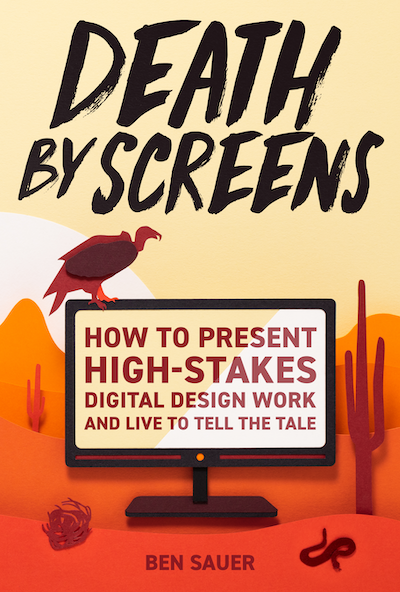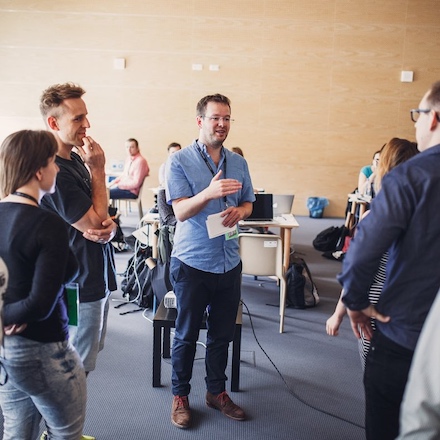






Tell great stories about your design work.
The secret of explaining design isn't a series of screens. It's the story around it.
- Engage your audience with a well-structured presentation
- Transform uninspired stakeholders into enthusiastic collaborators
- Overcome anxiety and stress with proven techniques
- Increase your influence and upgrade your design career
Death by Screens will teach you a less-obvious method of presenting, one that ensures your stakeholders will get that elusive ‘it’: why you’ve designed it that way, not just what you’ve designed.
You’ll learn what to say, what to show, in what order, how to do it with confidence, and how to have productive conversations with stakeholders.
Whether you’re presenting in a high-stakes scenario or not, Death by Screens teaches you how to be a strong communicator, vital to developing a successful design career.
Presenting soon? Get this book. Death by Screens is highly practical and (mostly) skips the theory - be a better presenter, fast.
Run a design team? Ask me about a 33% bulk discount!
Cover art by Kyle Bean
Cover design by James Gilyead
Published by Clouds and Clocks Publishing
"Storytelling is the key to getting that elusive seat at the table, but most designers don’t see themselves as storytellers. In this book, Ben covers what the early-career designer needs to get heard in a corporate environment."

—Jeff Gothelf, Co-author Lean UX and Sense & Respond
"This book is like the ultimate confidence booster for designers! Say goodbye to those scary meetings and hello to awesome chances for growth. Get ready to level up your design game and show 'em what you're made of!"

—Fonz Morris, Lead Product Designer, Netflix
10 tips for strategic storytellers
Get killer advice from the book in a handy PDF
I won't send you spam. Unsubscribe at any time.
"Successful designers know that doing the design is only half the work it takes to succeed - the other half is getting people to buy in. Use Ben’s strategies to create narratives with impact and credibility!"

—Jane Austin, Design Leader
"Such a helpful book for UX designers. At a high level, it's about making design presentations, but underneath, it's full of helpful advice to help you write better, think better, and work better with others!"

—Scott Jenson, UX and Strategy: Apple, Google
"Great book: tons of tactics to improve team alignment and landing ideas succinctly with senior stakeholders!"

—Tom Harman - Design Director at Monzo Bank


